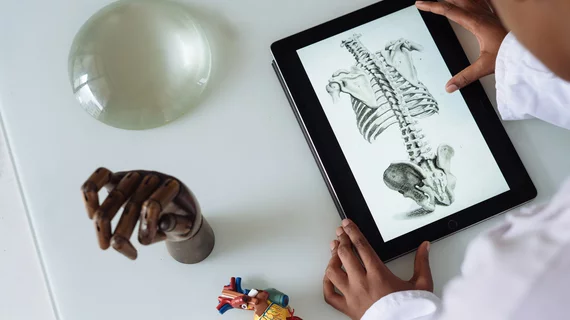Nonphysician practitioners' growing role in imaging interpretations
As the medical field continues to deal with physician shortages, nonphysician practitioners’ (NPPs) roles in healthcare are growing, and radiology is no exception to this trend.
It has long been known that NPPs increase utilization of radiology services, but new data indicate that they also are increasingly taking on more imaging interpretation responsibilities. A new paper in Current Problems in Diagnostic Radiology examines this trend and the drivers behind it.
“Understanding these trends is the first step toward assessing discrepancies in access and quality of radiological care from NPPs versus physicians,” corresponding author of the new paper Casey E. Pelzl, of the Harvey L. Neiman Health Policy Institute in Reston, Virginia, and colleagues noted.
To better understand the growing role of NPPs in radiology, experts analyzed data from more than 3 million imaging claims filed between 2016 and 2020. Of those claims, 3% were attributed to NPPs, with the highest rates of NPP reads per 10,000 images taking place in rural settings.
NPP interpretations saw a significant increase in metropolitan and micropolitan areas during the time frame studied, rising from 257 in 2016 to 331 claims per 10,000 beneficiaries in 2020. Although increased NPP reads were also noted in rural areas during that time, they did not grow at the same rate and the differences between 2016 and 2020 were not considered significant by the authors.
The largest increases in NPP interpretations in metropolitan areas were observed in states with less restrictive scope-of-practice policies and legislation.
“Generally, the growth in NPP numbers and access to care have been largest in states granting more autonomy,” the authors explained. “Our results support this, with increases in NPP-interpreted imaging occurring most notably in states with less restrictive SOP authority, with particular growth in metropolitan areas."
While the benefits of utilizing NPPs in primary care settings are numerous, there is a concern with their formal training relative to interpreting advanced imaging, the authors noted. Radiology assistants complete rigorous training in imaging, but nurse practitioners and physician assistants typically have only limited formal radiology education.
“Given how broadly NPPs acknowledge deficiencies in imaging training, the observed extent of NPP imaging interpretation in contemporaneous clinical practice, particularly for advanced imaging, is concerning,” the authors wrote.
The group went on to suggest that future research should compare post-imaging patient outcomes between those who had their studies read by NPPs versus physicians to better “assess the quality of and downstream costs related to increasing NPP-interpreted imaging.”
The study abstract is available here.

